#african lifestyle in new york
Text
Places Where You Can Experience African Lifestyle in New York
Whether it's visiting a significant historical landmark, a famed restaurant, an influential music venue, or a well-known museum, there are numerous opportunities to engage with the contemporary African lifestyle in New York.
#African Lifestyle in New York#Enjoy the African Experience#Harlem in New York City#African Burial Ground National Monument#African-American history#Black Culture#Alvin Ailey American Dance Theater#Jacob Javits Federal Building#Fatherland New York
0 notes
Text

Task 01.
PART 1: THE BASIC
What is your full name?
Her full name is Morgan Ann Ivy.
Where and when were you born?
Bronx, NY 2/22/98
Who are/were your parents? (Know their names, occupations, personalities, etc.)
Nicole Ivy she is direct & candid. She consider herself a stage mom while also being a stay at home mother & wife. She only had one job in her life, where she met Morgan’s father while he was making a play. Joe Ivy is the complete opposite of her mother. He is more calm & secretive. He has his own tech company in New York City which expands over 38 states and 15 other countries.
Do you have any siblings? What are/were they like?
Morgan has about 8 separate siblings, 5 of which were conceived outside of her parents marriage and she has never met them.
Where do you live now, and with whom? Describe the place and the person/people.
She currently lives alone in a townhouse located in Bel-Air. She has one cat named Shadow.
What is your occupation?
She is a socialite & works for her boyfriends company.
Write a full physical description of yourself. You might want to consider factors such as: height, weight, race, hair and eye color, style of dress, and any tattoos, scars, or distinguishing marks.
Morgan identifies as African-American woman that is 5’6 & weighs 140 pounds. She is currently the heaviest she has been in years. Her hair is in a neck length bob, dyed jet black & occasionally complimented with bundles or clip ins. She has about 10 tattoos, she has matching tattoos with her best friends and her mom. She has 6 piercings all residing on her ears. Her personal style is unique, she considers herself a self-proclaimed fashionista. She enjoys designer items.
To which social class do you belong?
Upper.
Do you have any allergies, diseases, or other physical weaknesses?
Morgan has seasonal allergies which include pollen.
Are you right- or left-handed?
Right-handed.
What does your voice sound like?
Her voice has been described as raspy with a New York accent.
What words and/or phrases do you use very frequently?
She often uses the words bro, yo and crazy.
What do you have in your pockets?
Nothing.
Do you have any quirks, strange mannerisms, annoying habits, or other defining characteristics?
She has a habit of rolling her eyes and kissing her teeth since copying her boyfriend.
PART 2: GROWING UP
How would you describe your childhood in general?
Morgan had a complicated childhood, to her. If you ask her parents she had the perfect childhood that they did not have growing up. She considered her life the picture perfect lifestyle if you were outside looking in. She was the middle child to her parents but the 5th child overall for her father.
What is your earliest memory?
Spending a weekend at her best friends house when she was 7.
How much schooling have you had?
Morgan graduated from UCLA.
Did you enjoy school?
She loved every moment of it.
Where did you learn most of your skills and other abilities?
In school.
While growing up, did you have any role models? If so, describe them.
Her grandmother was her biggest role model. She taught her how to treat people and how to get what she wanted out of life.
While growing up, how did you get along with the other members of your family?
Morgan only got along with her mother and siblings who lived in her household. She was cordial with her father.
As a child, what did you want to be when you grew up?
A stay at home mom.
As a child, what were your favorite activities?
Playing outside and going to basketball games.
As a child, what kinds of personality traits did you display?
She was very confrontational and honest.
As a child, were you popular? Who were your friends, and what were they like?
Yes, she was popular amongst her peers. She had 2 best friends named Sarah and Mya they were both stubborn and confrontational. Morgan was the only water sign in the friend group. They were both fire signs.
When and with whom was your first kiss?
Jordan. 6th grade at grand central station.
Are you a virgin? If not, when and with whom did you lose your virginity?
No, she lost her virginity at 15 to her long term boyfriend Jordan.
PART 3: PAST INFLUENCES
What do you consider the most important event of your life so far?
The most important event in her life so far is completing college with two degrees.
Who has had the most influence on you?
Her grandmother.
What do you consider your greatest achievement?
Graduating college.
What is your greatest regret?
Missing a year of college.
What is the most evil thing you have ever done?
The most evil thing she’s done is set her ex’s boyfriends car on fire along with his mothers.
Do you have a criminal record of any kind?
Yes.
When was the time you were the most frightened?
The time she was most frightened was when her father threaten to cut her off.
What is the most embarrassing thing ever to happen to you?
The most embarrassing thing that has happened was when her father found out she was dating someone his age.
If you could change one thing from your past, what would it be, and why?
She would change the fact she got caught with an older man.
What is your best memory?
Her best memory would have to be when she moved to LA for the last time.
What is your worst memory?
Her worst memory would have to be losing her grandpa and watching her grandpa live with a broken heart.
@la-rp - @la-citizens
20 notes
·
View notes
Text
Welcome to Black People’s Recipes!
Here you will find an assortment of Black cultural recipes for dinner, dessert, appetizers, side dishes, drinks, vegan meals, and more. Our recipes highlight the staple dishes found within African American, African, and Caribbean communities. We pride ourselves in sharing our family-favorite recipes that are prepared the right way and true to historical traditions.

Brandi Crawford is a cookbook author and the owner of Stay Snatched and Simple Seafood Recipes. She specializes in quick and easy meals for dinner along with Southern and soul food cuisine. Brandi loves to share recipes that are easy to follow that never compromise on taste. She grew up cooking alongside her mom and granny throughout her entire childhood and early years.
Brandi and Stay Snatched have been featured in Women’s Health Magazine, Shape Magazine, Parade Magazine, Essence Magazine, Country Living Magazine, Southern Living Magazine, BuzzFeed, Delish, The Kansas City Star, Kansas City Spaces, Greatist, and more.
She is the author of The Super Easy Air Fryer Cookbook and has been featured on Good Morning America, where she shared tips on how to live a healthy lifestyle that is sustainable and tips on meal prepping.

Meet Jessica from Jessica in the Kitchen, a vegan food blog. Jessica is an award-winning photographer, videographer, and home chef! She has been cooking and blogging for the last 12 years and without a doubt, she LOVES cooking. She focuses on simple, approachable, and SEASONED vegan meals and will be sharing all of her favorites with you here.
Fun Fact: She is a born and raised Jamaican and also grew up in the British Virgin Islands (also in the Caribbean) and will be throwing her favorite cultural dishes into the mix, too. Her mixed Caribbean upbringing heavily influences her love of well seasoned, bright, and fresh dishes. On the baking side, she comes from a family of caterers and bakers. She can’t wait to share that side with you too, in her baked goods!

Tanya Harris is the founder and owner of My Forking Life, a food site where she focuses on sharing easy and flavorful recipes with a heavy focus on Caribbean and Southern cuisine. Tanya grew up in a Caribbean household and lived in various cities in the Southern United States.
Tanya’s obsession with cooking developed later in life when she wanted her growing family to experience all the delicious meals she ate growing up. Now Tanya shares this same experience with her loyal followers and fans.
Fun Fact: Tanya is an avid cookbook collector and owns over 200 cookbooks! She likes to browse these books in her free time for inspiration on new recipes and ideas.
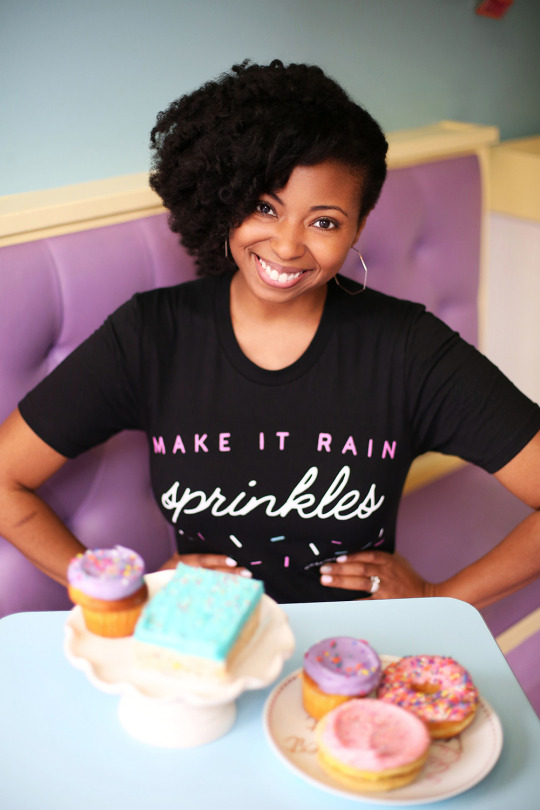
Jocelyn Delk Adams is the founder, author, and national television personality behind the food website Grandbaby-Cakes.com which serves millions of readers per year. On Grandbaby Cakes she gives her family’s, particularly her grandmother’s, cherished generational recipes her modern spin while preserving their original charm and spirit.
Jocelyn is a regular on the TODAY Show and Good Morning America, and has been featured as a judge on Food Network shows “Beat Bobby Flay” and “Santa’s Baking Blizzard” and Disney Channel and Disney Plus “Disney Magic Bake Off”, and in publications such as People Magazine, Food and Wine Magazine, Parents Magazine, New York Times, Washington Post, Better Homes and Gardens Magazine, O (The Oprah) Magazine, Essence Magazine, Huffington Post, Bon Appetit, Southern Living Magazine, and many others.

Shannon Epstein aka Fit Slow Cooker Queen is a home cook & recipe developer living in Los Angeles. Shannon is a gadget cook who specializes in slow cooker, Instant Pot, and air fryer recipes.
Fun fact: Shannon moved 9 times before she graduated high school.

Davinah from Dr. Davinah’s Eats is a former educator turned full-time foodie & entrepreneur. She came to blogging by accident after remaking comfort food recipes to fit a low-carb way of eating on Instagram. Her seared scallops and cauliflower rice risotto, crispy fried air fryer chicken without flour, and keto bang bang shrimp went viral and the blog became her way to store and share her recipes.
Her main website focuses on everyday low-carb comfort food and air fryer recipes for foodies. Black People’s Recipes allows her to go back to where her love for food started – making traditional recipes with her mom and other women in her family.
Besides being a foodie, Davinah is a trained data scientist, real estate investor, new mom, and wife. She loves organizing her life in excel sheets and solving random math problems.
Fun fact: feeling adventurous, she climbed the Coba Pyramid (137 feet) in Mexico, but was too scared to come back down. So, she scooted one step at a time back to the ground!
#Welcome to Black People’s Recipes#Black Food#Black Cooking#Black People Cooking#Black People's Recipes
12 notes
·
View notes
Text
Max’s (OC) Character Profile
Name: Max Johnson 😂
Nicknames: Mr J
Age: 21
Ethnicity: Half African American (father) and half Korean (mother)
Height: 6 ft 9 (205cm)
Build: Athletic
Flaccid length: 7.5 inches
Flaccid girth: 6 inches
Erect length: 13 inches
Erect girth: 10 inches
Short backstory: Son of a wealthy and influential CEO. Max grew up in New York living a privileged lifestyle. He attended top schools, was a star basketball player and developed friendships and connections with the global elite. Upon completing his penultimate year at Harvard University, something terrible happened.
Favourite kinks and positions: Underwear, lingerie, bikini, sportswear, handjob, blowjob, titjob, throat job, facefuck, fingering, thigh job (intercrural sex), ass job (intergluteal sex), measuring up, clothed sex, doggy style, cowgirl, reverse cowgirl, 69, wheelbarrow, spread eagle, prone bone, mating press, deep penetration, facial, creampie, breeding, role play, massage, strip tease, lap dance, pole dancing, underwater sex, pool sex, beach sex, shower sex, car sex, spanking, discipline, rough sex, gagging, cheating, public sex, outdoor sex, mirror sex, belly bulge, praise kink, humiliation, blindfold sex, bondage, breath play, choking, mind break, ahegao, gangbang, harem, slave, submission, free use, filming, sex tape, glory hole, spit roast, all holes filled, daddy kink, mommy kink, defloration/deflowering, painal, rape, non-con, dubcon, hair pulling, face slapping, dacryphilia
3 notes
·
View notes
Text








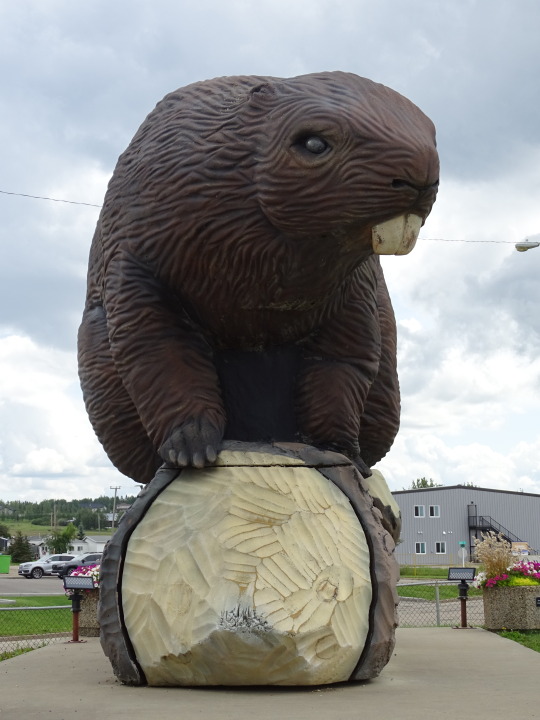







World Cities Day
World Cities Day is observed on October 31 every year. The aim of the day is to raise awareness about global urbanization and push for global cooperation in sustainable urban development. World Cities Day aligns with the U.N.’s Sustainable Development Goal 11, Sustainable Cities and Communities — which deals with urban development sustainably. World Cities Day was announced by the U.N. in 2013 and has been observed every year since. The day brings to light the inequalities within the biggest cities in the world and pushes for greater social inclusion, including equality and access to services and opportunities.
History of World Cities Day
The first-ever cities appeared in the fertile crescent between the Tigris and Euphrates rivers in a land known as Mesopotamia around 7500 B.C. These cities included Eridu, Ur, and Uruk. Soon, cities formed along the banks of the Nile River in Egypt, the Indus River in India, and the Huang He River in China. Cities grew in places with fertile soil, letting early humans abandon a more nomadic lifestyle. For the following millennia, cities continued to rise and fall across the world. Mesopotamia turned to rubble, the Indus Valley was deserted, and Rome rose and fell. But the institution of the city never went away.
Cities have been centers of trade, religion, culture, and education throughout history. However, the sheer scale of urban settlements today only became possible after the Industrial Revolution. The revolution drove people to cities in search of job opportunities in factories. Urban population growth has also been supported by technological advancements — these include the invention of steel, electricity conduction, elevators, etc. Over half the world’s population lives in cities now, and it’s more important than ever to make these people aware of how to sustainably co-exist within cities.
The U.N. has predicted that by 2030, there will be 41 megacities — cities with a population of over 10 million people. India, with its five megacities, is expected to house seven, other places that are bound to have megacities spring up include the likes of Kinshasa, the capital of the Democratic People’s Republic of Congo.
World Cities Day timeline
7500 B.C.
Cities Spring Up
Cities begin springing up in Mesopotamia.
395 A.D.
The Fall of Rome
The Western Roman Empire falls.
1760
The Industrial Revolution
The Industrial Revolution begins.
2013
World Cities Day
The U.N. announces the first World Cities Day.
World Cities Day FAQs
What was the theme of World Cities Day 2021?
The theme of World Cities Day was “Adapting Cities for Climate Resilience.”
What is a primate city?
A primate city is a city that is dominant among a country’s urban areas.
What are examples of primate cities?
Mexico City, Paris, Cairo, Jakarta, and Seoul have all been referred to as primate cities.
How to Observe World Cities Day
Learn about the history of cities
Learn about the issues in the modern city
Tell your friends and family
World Cities Day exists because cities do. Learn about the history of cities and find out things that may surprise you.
The institution of the city is fraught with problems, learn about them. See how communities as a whole can help solve some of them and make a difference in your city.
If you live in a city, help spread awareness by talking to your friends and family about what you learned. If nothing more, you can wow them with facts.
5 Interesting Facts About Cities Around The World
Moving Day
Museums
The Hollywood sign
Penguins in the city
Oldest European capital
Until the 1920s, everyone in New York only moved homes on May 1 — known as ‘Moving Day.’
Berlin has over 170 museums.
The iconic Hollywood sign in Los Angeles was initially spelled ‘Hollywoodland.’
Cape Town houses over 2,000 African penguins.
The oldest European capital is Athens, Greece.
Why World Cities Day is Important
It’s an excuse to learn about cities
It shines a light on an important issue
It’s a reminder to live more sustainably
Cities are a fascinating concept. We appreciate any opportunity to learn more about the ecosystem in which half the world lives.
Cities are indeed fraught with inequalities. World Cities Day brings to light the many problems plaguing cities around the world.
Sustainable development has been immensely imperative for decades now. World Cities Day is a reminder to be more mindful of that fact.
Source
#Vancouver#travel#original photography#vacation#tourist attraction#landmark#cityscape#architecture#summer 2023#USA#Canada#Whistler#Quesnel#Whitehorse#Skagway#Bend#Stewart#Watson Lake#Dawson Creek#Grande Cache#Beaverlodge#Jasper#San Francisco#Omak#Klamath Falls#Napa
4 notes
·
View notes
Text
retournement de veste !
All the kpop idols being invited to fashion events and becoming houses ambassadors made me think about how fashion luxury houses are so fast to turn around and try to seduce a public they used to turn their backs to. In fact, these companies have always wanted to dissociate themselves with certain groups and figures. The Kardashians are a great example of this phenomenon, luxury houses didn’t really want anything to do with them until Balmain’s creative director Olivier Rousteing took an interest in the family.
In France, owning luxury items is popular in urban areas leading to a love and hate relationship between fashion houses and these populations that don’t fit the image of said houses. The derogatory, racist and classist term “Lacoste TN” designate young black and north African men living in urban areas dressing in Lacoste tracksuits with AirMax TN sneakers. The term is widely known and shows the popularity of this style mixing streetwear and luxury. Unfortunately for these houses, this is not the lifestyle and outdoor activities they are trying to promote :( The luxury tennis outfit oriented brand Lacoste especially, whose popularity in the suburbs is incredible, has been vocal about not wanting to associate with this group. Eventually, with them playing quite a large part in Lacoste’s sales in France, the house ended collaborating with french rapper Moha La Squale.
France is not the first country encountering this behavior. Actually, the popularization of streetwear, monogram, sneakers and chunky jewelry in luxury is due to the African American community in neighborhoods of New York and Hip Hop music. Dapper Dan was an amazing designer from Harlem, is influence on black music and the style associated with it is huge. His work at first consisted of creating knock-offs of luxury items and playing around with logos. That is how the monogram print was popularized. Luxury houses which excluded black people, did not want to be associated with them or their music, called their style tacky, ghetto or ratchet started reappropriating these creations and selling them to white rich people in the suburbs.
When European luxury houses first made their first steps into Asia, whiteness and the Parisian style was the goal. Boarding school uniform inspired preppy was in vogue in Japan starting from the 1960′s. I have always found it odd how 30 years later, with the rise of Harajuku fashion and the popularity of streetstyle photography magazine FRUiTS, these brands never tried to collaborate or work with young Japanese artists. It was maybe too tacky for them, too out of pocket or too “street” since it seems like it is a global problem. So it is funny now to see how Heavn by Marc Jacobs collaborated with FRUiTS Magazine’s photographer Shoichi Aoki and tried to mimic an aesthetic by watering down alternative asian fashion culture and manufacturing it to sell it to the mass while the whole purpose of the movement was to protest against social norms by being unique and creating unique in the world pieces mixing traditional and modern clothing. I am not trying to say i hate the brand, I actually liked it at first, I am juste a girl in my twenties who likes asian fashion so of course I liked it. But when thinking about it, nothing new has been created, everything they sell is already available on the market. It just caters down to mass consumerism and the “weird girl aesthetic” that for some reason makes me think of the manic pixie dream girl except it is fashion.
Now with the influence of Korean culture you know they had to ! Houses will go out of their way to have at least one Korean celebrity sit at their show, idols being the golden ticket. Even if this is not new and even if I am glad artists get this opportunity, I find it sad and sometimes reducing to invite pretty faces instead of actually working with them on interesting projects, especially since South Korea is a buzzing spot for emerging designers and small artists. It is like non white people have two options: be excluded or be a totem.
(if you want to know more about Heavn i suggest you watch this video ! it is really interesting and i agree with everything being said)
7 notes
·
View notes
Text
Lingshan Hermit: Buddhism is without borders
A friend living in the West once asked me whether Buddhism is applicable to the Western world, whether it's suitable for those raised in the ambience of a church, and how to integrate Buddhism with Western culture to make it acceptable to Westerners.
I counter-asked: Do Westerners have troubles? Do they get angry? If so, then Buddhism in the West will not be regarded as a useless thing, nor will it be disregarded.
Buddhism belongs to everyone, to every sentient being, regardless of whether you have yellow, white, or black skin, whether you live in the African rainforest or the Sahara Desert, in Beijing, Johannesburg, or Istanbul, regardless of whether you eat sushi, kimchi, or bread and butter, whether you wear sarees or kimonos, and whether you speak Chinese, Tibetan, an African dialect, or Malayalam. As long as you wish for happiness and hope to escape suffering, Buddhism will be helpful to you.
Outward differences cannot mask inward similarities. Everyone desires happiness, everyone possesses greed, anger, and ignorance, the targets of these feelings just differ. For instance, raw fish slices that stimulate the appetite of Japanese people might be hard to swallow for Chinese. Yet, Chinese people would salivate over Buddha Jumps Over the Wall. The objects that trigger greed, anger, and ignorance are different, but the emotions are the same.
People wearing kimonos and people wearing sarees are fundamentally no different; they possess the same greed, anger, ignorance, and all the weaknesses of human nature. As long as we have these emotions, we need Buddhism to level them out.
However, similarly, I do not believe that Buddhism needs no adjustments when it enters the West - of course, these changes are only in the method, the essence cannot be altered.
For example, when Tibetan Buddhism came to Han regions, many Tibetan teachers also brought along their lifestyle habits, some of which had little to do with Buddhism.
Some of the metaphors used by the Buddha in his teachings are rather cryptic today, and we might need to refer to a dictionary to understand what the Buddha was talking about. Some things mentioned in Buddha's metaphors have disappeared from modern life, but in Buddha's era, everyone was familiar with them, and using them as metaphors made it easier for everyone to grasp his teachings. If Buddha were alive today, I believe he would use familiar things to us for his metaphors.
What I'm trying to say is, in the West, Buddhism also needs to be explained in ways that Westerners can easily understand. The truth of the Four Seals can be told using things familiar to Westerners. You cannot change the truth, but you can change the way the truth is told.
For instance, in Tibetan Buddhism, when describing the merits of the Lotus-Born Great Tamer mantra, it was said: if you recite this mantra, you will get a lot of yaks and livestock. Obviously, this is a specific instruction for Tibetans living on the Tibetan Plateau.
If you describe the merits of this mantra to a Westerner who works daily at the New York Stock Exchange, they might not be too interested. They might even abandon the mantra, worrying about where to raise all these yaks they received (raise yaks in Manhattan?). In this case, the description of the mantra's merit should be appropriately adjusted, perhaps to: if you recite this mantra, you will earn a lot of money on stocks. For a Westerner working at the New York Stock Exchange, this would be much more attractive. You should understand what I am trying to express based on this.
In fact, unknowingly, Buddhism has begun to spread in the West. You might catch sight of Western lamas in Tibetan red robes, and more and more Western faces are appearing at various Dharma assemblies. This shows that it is not just us who need Buddhism, but also demonstrates the universal value of Buddhism. It depicts eternal truth. This truth is the same everywhere.
As long as this world still has greed, anger, ignorance, troubles, wars, as long as we still have jealousy and displeasure, Buddhism is necessary. The only situation where we could abandon Buddhism is when we all have achieved Buddhahood.
This article was first posted on the Lingshan Hermit blog on November 26, 2007.
Copyright Notice:All copyrights of Ling Shan Hermit's articles in Simplified and Traditional Chinese, English, and other languages belong to the natural person who owns "Ling Shan Hermit". Please respect copyright. Publishers, media, or individuals (including but not limited to internet media, websites, personal spaces, Weibo, WeChat public accounts, print media) must obtain authorization from Ling Shan Hermit before use. No modifications to the articles are allowed (including: author's name, title, main text content, and punctuation marks). We reserve all legal rights.
灵山居士:佛法无国界
3 notes
·
View notes
Text
youtube
Follow our blog, Tellers Untold. Sankofa Chicago is now available to rent or purchase on Amazon Video.
“If you want to understand your culture today, you need to know your past.” Quote by Vanessa Wright, founder of Tellers Untold
Dr. Sebi: The Infamous Name in Hip Hop and Health for Decades (That You are Probably Just Now Hearing)
By Desmond Alphonso, formerly (Issa Page)

The gossip
The common idiom “you are what you eat” may take on a different meaning within pop culture today. Once upon a time, the immediate perception simply was the consumer will react according to the genetic make-up of the food, but because of the lifestyle influence of Dr. Sebi, even the influencers to our youth are aware certain nutrients hold the keys to life and restoration. The benefits of what we eat lie in the nutrients and it is the nutrients that we bestow to our bodies that hinder illnesses. Don’t skip anything on your plate, kids! Once summoned to the court of law due to his seemingly outrageous medical claims, Dr. Sebi went on trial for practicing medicine without a license yet having patients and their actual medical doctor confirm being free of the illness they once had that he helped cure with holistic medicine.
What we should know
However, his career dates back as far as Honduras in 1971, he has become a household name in recent years how he is linked to two of the music industry’s late-great hip-hop icons Lisa “Left Eye” Lopez and Los Angeles community activist and apparel-business owner, Nipsey Hussle. Though the two reasons behind their fascination for Dr. Sebi differed, it always occurred to the public that Dr. Sebi’s discovery and knowledge of cures for major diseases and illnesses, such as asthma, diabetes, parasites, kidney disease, cancer, HIV/AIDS, and many others was the most revolutionary. According to the belief system of the Sebi family, it is the mind’s negative thoughts that released mucus-prone acid that promotes a harmful environment for the food and a just environment for ailments, not the opposite way around, ironically!
His early life
Alfredo Darrington Bowman, of African descent, was born in Ilanga, Honduras on November 26, 1933. Unlike the typical American child, young Alfredo did not attend school nor did he have any education at all aside from what he was taught by her grandmother about heritage. By his late 20s, Bowman had been obese; asthmatic; manifesting signs of erectile dysfunction; diabetic; schizophrenic, and was becoming visually impaired. His dissatisfaction with traditional medicine prompted his migration to many different countries looking for treatment, but it wasn’t until he arrived in Cuernavaca, Mexico where he met a 94-year-old herbalist (with the same first name), Alfredo Cortez, before he started to see changes in his health. He was asked by Cortez to fast for 90 days by only drinking water and eating herbs. Once he completed the fast, he was then permitted to eat only African-bound foods simply because they are of his origin. With his diet and meditation combined, Bowman took part in what he came to believe had the power to heal.
The trial
The people in his village coined him as Dr. Sebi when he introduced them to holistic treatment. By the time of the Supreme Court suit (happened between 1988-1993) against the State of New York, Dr. Sebi cured a plethora of people around the globe and had 77 patients there to attest to it. He had no defense attorney, but was against the idea he needed one. He eventually helped the court room realize he is not treating several different diseases, but in fact only one: mucus.
What sits on the lungs of a patient with pneumonia? [Mucus does.] What do AIDS patients cough up? [They cough mucus.] What is trapped in the intestines of the blind? [Mucus is.], a Dr. Sebi banters with Judge Anne Schneiderman.
She could not refute the medical status of his patients nor she could the logic behind his herbs—Dr. Sebi was free of all charges and had become one of the very few that won a case in the New York State Supreme Court during that time.
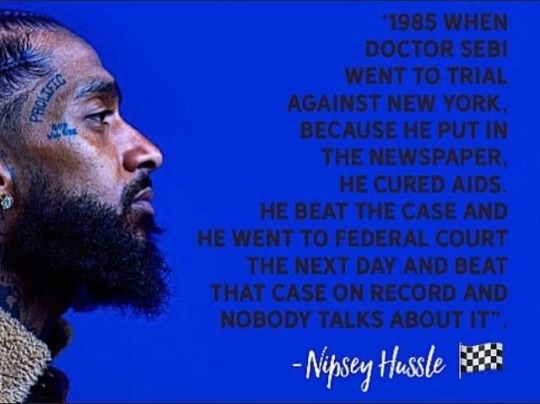
Conclusion
In medicine, he’s infamous, but what makes him a legend everywhere is the work he has done for entertainers, such as John Travolta, Lisa Lopez, Eddie Murphy, and Michael Jackson to name a few, live healthier lives in the past—as well as the impact he has made on the African American youth in recent years. From YouTubers to the late great Nipsey Hussle, each was compelled to live better through Dr. Sebi’s methodology in which they have seen results. Following the rap star’s death in March 2019, Nick Cannon came forth volunteering to finish the Dr. Sebi documentary Nipsey Hussle spoke into existence. It soon circulated on social media that Cannon cancelled the documentary once receiving death threats and fearing he would be murdered for the same reason some speculate Nipsey Hussle was murdered for. He took to Instagram to deny this claim and even laughed at it! According to HipHopWired, the release of the documentary can be expected in 2021 with the help of the Bowman family.

Work cited
/@arahthequill. “‘Dr. Sebi’ Was Either A Complete Fool Or A Complete Fraud, But He Was No Healer.†Medium, Medium, 6 May 2019, medium.com/@arahthequill/dr-sebi-was-either-a-complete-fool-or-a-complete-fraud-but-he-was-no-healer-a378dff54713.
97, HOT. “Family Of Dr. Sebi On Nick Cannon Reaching Out On Doc, Magic Johnson’s HIV Status Left Eye.†YouTube, YouTube, 24 Apr. 2019, www.youtube.com/watch?v=sq2OUdle6Bg.
“Alfredo Bowman, Celebrity Herbalist – Obituary.†The Telegraph, Telegraph Media Group, 23 Aug. 2016, www.telegraph.co.uk/obituaries/2016/08/23/alfredo-bowman-celebrity-herbalist–obituary/.
BerriosPosted, Martin. “Nick Cannon Is Moving Forward With The Dr. Sebi Documentary.†Hip, 31 May 2019, hiphopwired.com/808581/nick-cannon-is-moving-forward-with-the-dr-sebi-documentary/.
“Dr. Sebi Started His Health Journey After Being Cured By A Mexican Herbalist.†Alkaline Plant Based Diet, 28 Feb. 2019, www.naturallifeenergy.com/dr-sebi-started-his-health-journey-after-being-cured-by-a-mexican-herbalist/.
RockNewmanShow. “DR SEBI on The Rock Newman Show.†YouTube, YouTube, 23 Oct. 2015, www.youtube.com/watch?v=Qx6_073GDkQ.
#sankofa#sankofachicago#drsebi#Nipseyhussle#Michaeljackson#eddiemurphy#lisalopez#lefteye#johntravolta#medicine#health#hiphop#music#culture#blackhistory#africa#cures#hiv/aids#blindness#diabetes#holisticmedicine#obesity#obese#visuallyimpaired#asthma#mexico#honduras#newyork#cancer#Youtube
2 notes
·
View notes
Text
Black Contribution to Fashion and Wardrobe in the West: Past, Present and Future
How We Arrived | A Brief Recount with Many Threads
Fashion is a form of communication that reflects the identity, culture and values of individuals and groups. Fashion is also influenced by the social, political and economic contexts of different times and places. Throughout history, Black people have contributed to fashion and wardrobe in the West in various ways, from creating original styles and trends to challenging stereotypes and discrimination. In this article, we will explore some of the aspects of Black contribution to fashion and wardrobe in the West, and how they might shape the future of fashion.

The Origins of Black Fashion
Black fashion has its roots in the diverse cultures and traditions of Africa, where clothing was not only a functional necessity, but also a symbolic expression of status, religion, ethnicity and aesthetics. African textiles, such as kente, adire, bogolan and shweshwe, were made with intricate techniques and patterns, and often dyed with natural colors from plants and minerals. African clothing, such as dashikis, kaftans, boubous and agbadas, were designed to fit the climate and the lifestyle of the people, and often embellished with beads, shells, feathers and metalwork. African fashion also reflected the influence of other cultures, such as Arab, European and Asian, through trade, migration and colonization.
The Impact of Slavery and Colonialism
The transatlantic slave trade and the colonization of Africa by European powers had a profound impact on the fashion and wardrobe of Black people in the West. Enslaved Africans were stripped of their cultural identity and forced to wear the clothing of their oppressors, which was often cheap, coarse and ill-fitting. However, enslaved Africans also resisted and adapted to their situation by modifying, embellishing and personalizing their clothing, using scraps of fabric, buttons, ribbons and jewelry. They also preserved and transmitted some of their cultural heritage through their clothing, such as headwraps, turbans, bandanas and scarves, which were worn for protection, modesty and dignity. Some enslaved Africans also managed to acquire or make finer clothing, especially for special occasions, such as weddings, funerals and holidays, which allowed them to express their individuality, creativity and pride.
The Rise of Black Fashion Movements
The abolition of slavery and the civil rights movement in the 19th and 20th centuries gave rise to various Black fashion movements that challenged the dominant norms and standards of beauty, and celebrated the diversity and richness of Black culture. Some of the examples of these movements are:
The Harlem Renaissance: A cultural and artistic movement that emerged in the 1920s and 1930s in Harlem, New York, where Black artists, writers, musicians and intellectuals created a vibrant and influential scene that showcased their talents and achievements. The Harlem Renaissance also influenced fashion, as Black people adopted and adapted the styles of the Jazz Age, such as flapper dresses, zoot suits, fedoras and pearls, and added their own flair and elegance. Some of the icons of this movement were Josephine Baker, Billie Holiday, Langston Hughes and Zora Neale Hurston.
The Black Power Movement: A political and social movement that emerged in the 1960s and 1970s in the United States, where Black people demanded their rights, freedom and justice, and asserted their identity, dignity and self-determination. The Black Power Movement also influenced fashion, as Black people embraced and reclaimed their African roots, and expressed their solidarity and resistance. Some of the styles of this movement were Afros, cornrows, braids, dashikis, leather jackets, berets and sunglasses. Some of the icons of this movement were Malcolm X, Angela Davis, Huey P. Newton and Kathleen Cleaver.
The Hip Hop Movement: A cultural and artistic movement that emerged in the 1970s and 1980s in the Bronx, New York, where Black and Latino youth created a new form of music, dance, art and fashion that reflected their realities, experiences and aspirations. The Hip Hop Movement also influenced fashion, as Black and Latino youth innovated and experimented with different styles, such as baggy jeans, sneakers, tracksuits, baseball caps, gold chains and graffiti. Some of the icons of this movement were Grandmaster Flash, Run-DMC, LL Cool J and Salt-N-Pepa.

The Influence of Black Fashion on the Mainstream
Black fashion has not only been a source of inspiration and empowerment for Black people, but also a source of influence and appropriation for the mainstream fashion industry and culture. Black fashion has often been copied, imitated and commodified by white designers, celebrities and consumers, who have profited from the creativity and originality of Black people, without giving them proper credit, recognition or compensation. Some of the examples of this phenomenon are:
The minstrel shows: A form of entertainment that originated in the 19th century in the United States, where white performers wore blackface and exaggerated costumes to mock and stereotype Black people and their culture. The minstrel shows also influenced fashion, as white people adopted and adapted some of the clothing and accessories of Black people, such as hoop skirts, bandanas, gloves and canes, and used them for amusement and mockery.
The orientalism: A form of representation that originated in the 19th and 20th centuries in Europe and the United States, where white artists, writers and scholars depicted and distorted the cultures and peoples of Asia, Africa and the Middle East as exotic, mysterious and inferior. Orientalism also influenced fashion, as white designers, celebrities and consumers adopted and adapted some of the clothing and accessories of these regions, such as turbans, kaftans, kimonos and harem pants, and used them for fantasy and fetishism.
The cultural appropriation: A form of exploitation that occurs in the contemporary globalized world, where white designers, celebrities and consumers adopt and adapt some of the clothing and accessories of marginalized and oppressed cultures, such as Native American headdresses, Indian bindis, African prints and dreadlocks, and use them for fashion and fun, without respecting or understanding their meanings and histories.

The Future of Black Fashion
Black fashion has a long and rich history that reflects the struggles and achievements of Black people in the West and beyond. Black fashion also has a bright and promising future that offers new possibilities and opportunities for Black people to express their identity, culture and values. Some of the trends and developments that might shape the future of Black fashion are:
The Afrofuturism: A form of imagination that envisions the future of Black people and their culture in relation to science, technology and innovation. Afrofuturism also influences fashion, as Black people create and wear clothing and accessories that combine elements of their African heritage and their futuristic aspirations. Some of the examples of this trend are the movie Black Panther, the singer Janelle Monáe and the designer Mowalola Ogunlesi.
The sustainability: A form of awareness that recognizes the environmental and social impacts of the fashion industry and its practices. Sustainability also influences fashion, as Black people create and wear clothing and accessories that are made with ethical, organic and recycled materials, and that support local, fair and diverse production. Some of the examples of this trend are the brand Lemlem, the model Adwoa Aboah and the activist Dominique Drakeford.
The diversity: A form of inclusion that celebrates and respects the differences and similarities among Black people and their culture. Diversity also influences fashion, as Black people create and wear clothing and accessories that reflect their various identities, such as gender, sexuality, class, religion and disability. Some of the examples of this trend are the magazine CRWN, the actor Billy Porter and the designer Sinéad Burke.
Black fashion is a powerful and dynamic phenomenon that has contributed to fashion and wardrobe in the West in many ways. Black fashion is also a potential and transformative phenomenon that can contribute to fashion and wardrobe in the West in many more ways. Black fashion is not only a form of communication, but also a form of expression, resistance and liberation.
Amid a period when history classes might opt to reinterpret the Black influence, fashion schools are progressively integrating Black fashion history into their curricula, all credited to the efforts of committed educators. These educators employ diverse methodologies—lectures, discussions, and practical projects—to impart the narrative of Black fashion history. Additionally, they actively strive to broaden the spectrum of Black fashion designers and styles presented within the classroom setting.
Here are some of the experts, educators and advocates for continued education in the evolutionary process of Black Fashion:
- Dr. Jonathan Square, assistant professor of Black Visual Culture at Parsons School of Design and founder of Fashioning the Self in Slavery and Freedom, who teaches courses on Black beauty culture and Black fashion history, and organizes events and exhibitions on these topics
- Dr. Tanisha C. Ford, associate professor of Africana Studies and History at the University of Delaware and author of Liberated Threads: Black Women, Style, and the Global Politics of Soul, who explores the connections between fashion, activism and social movements, and co-curated the exhibition Black Girlhood and the Power of Belonging at the Delaware Art Museum.
- Dr. Monica L. Miller, associate professor of English and Africana Studies at Barnard College and author of Slaves to Fashion: Black Dandyism and the Styling of Black Diasporic Identity, who examines the role of fashion in shaping Black identity and culture, and co-edited the book Black Dandyism: A Reader.
- Elizabeth Way, associate curator of costume at The Museum at FIT and co-curator of the exhibition Black Fashion Designers, who researches and showcases the work of Black fashion designers from different eras and regions, and organizes public programs and publications on Black fashion history.
*see also The Experts Bringing Black Fashion History to Fashion Education: https://fashionista.com/2023/10/experts-teaching-black-fashion-history by Fashionista:

Empowering Movements in Black Fashion
The unique expression and activism within Black culture persistently shape fashion's diversity and interconnectedness. This influence resonates through the multicultural fabric of humanity, impacting even mainstream trends, notwithstanding past challenges of appropriation and insufficient acknowledgment.
Discover the world of Black fashion and become an active participant in its vibrant tapestry! Here are actionable steps to engage with and support Black fashion:
Attend Exhibitions: Showcasing Black designers and movements.
Support Black-Owned Businesses: Empower Black entrepreneurship by consciously choosing to support Black-owned fashion brands.
Educate Yourself: Explore the rich history of Black fashion, discover how these contributions have effected your style.
Black fashion is a global style panorama. Thank you for reading, comment, like and follow.
1 note
·
View note
Text
Fatherland New York - Enjoy the African Experience
Fatherland New York, a mission-driven global enterprise that fosters vibrant economic, social, and culture to increase opportunity for people of Africans worldwide. We are creating global economic opportunities for the African and African Descendants, yielding significant revenue for the governments via tax payments from the enterprises, tourists, residents, and employees.
#african lifestyle in new york#black culture new york#afro american culture#yoruba culture and tradition#new york african#africa culture and traditions#fatherland new york#spiritual pilgrimage new york
1 note
·
View note
Text
Confession in the Unification Church
MUST LISTEN: The "Cult of Confession" episode of Blessed Child podcast
One Twitter user @kijinosu describes this episode and its content:
"In this podcast, Renee describes a feature of thought reform that I hadn't seen elsewhere in my yet brief studies. Let me label it the Big Brother effect and put it out for discussion. Listen to ‘Cult of Confession with Renee'. I call it the Big Brother effect because, as I understand it, UC's incessant report-contact-consult practice combined with group confession causes the believer to feel that they are always being watched. In response to this feeling of always being watched, the believer creates a god that covers all of the demands of the collective. Because satisfying this god then satisifes all of the collective's demands, the believer focuses just on this god. The end result is self-reinforcing thought reform that is less dependent of the collective for maintenance.”
Confession in the Unification Church
Moon and Kwak on repentance, October 1989:
Each one of us needs heavenly wisdom to solve the problem of our own burden. To be able to live a lifestyle in which we can confess and report things to a central figure can only bring us great fortune.
Hyo Nam Kim (Dae Mo Nim) on March 9, 2002:
In the Divine Principle, is there anything written about the removal of Original sin? In the first, original Blessings, to qualify we had to confess all of our sins and repent and accept pardon as part of the condition to receive the Blessing. Yet, from 6000 Couples Blessing on, our sins were forgiven upon easier and easier conditions. Father would say, subsequently, "I will not ask about your past... just repent and recommit..."
Sun Myung Moon on April 26, 1992:
"Even now you sometimes sneak a drink. Father understands this very well, these secret drinks taste the best. Raise your hands if you sneak a drink sometimes. If you do not confess, it will carry over to the Spirit World."
From the Interview and Confession Form for BC Matching/Blessing Applicants:
It is the responsibility of your District Director (or the designated church leader or STF Director), representing the Continental Director and True Parents, to make sure that you understand the value of the Blessing and that you are prepared and qualified to attend. This confidential meeting is also your opportunity to confess any sins and perhaps receive guidance so that you can go into the Blessing with a clean conscience, free from accusation. Sin came into this world through the fall and cut us off from God, therefore it is important to confess your sins. Do not try to hide your mistakes because they will eventually come out and cause even more pain. The confession pages will stay confidentially with a representative of the Blessing Department. All three pages must be submitted to the Blessing Department.
Conference with [Black] Heung Jin Nim - Takeru Kamiyama (1987)
Before he came to New York in November 1987, I had heard many stories about his new existence in the body of a black African young man, traveling around and hearing confessions. I wondered, how can this brother really be [Black] Heung Jin Nim? Members all over the world are claiming that [Black] Heung Jin Nim has spoken through them, but how can we know if he really did?
Black Heung Jin Nim in DC by Damian Anderson
"With my own eyes, I saw this man in the Washington DC church knock people’s heads together, hit them viciously with a baseball bat, smack them around the head, punch them, and handcuff them with golden handcuffs. I had seen enough. Todd Lindsay was the first to leave. His wife was due to have a baby any day. My wife was six months pregnant at the time, and we were next in line for “confession” to the heavy-handed inquisitor."
Heung Jin Nim’s Spiritual Work by Michael Mickler:
These lectures, punctuated by songs and testimonies or sometimes lively jumping and marching, also took hours, and there was no provision for sleep during the three days. Food also was not a problem since most members were placed on fasting conditions following their confessions. Heung Jin Nim showed special concern for infertile couples and called for couples willing to give birth to a child for them to adopt. There were “tears streaming from many eyes” as “the giving and receiving couples embraced with deep emotion.” At the close of each conference, “participants were given a detailed schedule for their…lives of devotion and attendance,” including time for morning and evening prayers and for study and discussion of the Principle. Many members experienced personal liberation. Public confession or confession with one’s spouse was a prominent feature of “Black” Heung Jin Nim’s conferences. They could unburden themselves of deeply held secrets and “separate from Satan.” Within an intensely supportive environment, they could repent, make restitution as needed, and have a “second chance” to become pure. Others achieved levels of spiritual intimacy, which had been lacking.
On the MRA’s use of confession
Encyclopedia.com on Frank Buchman’s use of confession in the Oxford Group Movement:
He organized his followers into small groups where participants could confess their sins and share their religious experiences in an intimate setting; members would then seek to convert others through one-onone evangelism. Buchman's followers listened for God's plans for their lives, and measured their behavior through a moral code centered on absolute honesty, purity, unselfishness, and love (the Four Absolutes). During the 1920s Buchman developed an international network of these small groups that became known as the Oxford Group Movement.
Encyclopedia.com on Frank Buchman’s use of confession in the Moral Re-Armament Movement:
In 1938 he announced the campaign for Moral Rearmament (MRA), offering Christianity as an alternative to both communism and fascism. In the late 1930s MRA sought to prevent war by calling individuals on each side to confess their sins to the other and adhere to the Four Absolutes. During World War II it turned its energies to morale building, especially in industrial relations. MRA saw Christianity and communism as the world's two competing ideologies; during the Cold War it sought to defend the West, primarily by focusing on labor peace, strong families, and moral values. Through the 1950s the movement held international rallies and used the media skillfully; it achieved prominence by publicizing the involvement of world leaders, especially from the United States, the British Commonwealth, and Asia.
#Moral Rearmament Movement#moral re-armament movement#frank buchman#oxford group#confessions#black heung jin#cleophas kundioni#cleophas#moonies#unification church#unification theology
2 notes
·
View notes
Photo

Clifton Duncan Davis (born October 4, 1945) is an actor, singer, songwriter, minister, and author. He was born in Chicago, the son of Thelma van Putten Langhorn, a nurse, and Toussaint L'Ouverture Davis, a Seventh-day Adventist minister. He was raised in Mastic, New York, and he is a graduate of Pine Forge Academy, an African American boarding school operated by the Seventh Day Adventist Church. He holds a BA in Theology from Oakwood University and an M.Div from Andrews University. He wrote The Jackson 5's No. 2 hit "Never Can Say Goodbye" in 1971. He appeared on Broadway in the musicals Two Gentlemen of Verona and Aladdin. He starred in the television shows That's My Mama, Amen, Madam Secretary, and many others. He has hosted the Stellar Gospel Music Awards, Gospel Superfest, and Lifestyle Magazine. He has appeared on the game shows Match Game and Pyramid and has appeared in many movies. He co-starred with singer and Broadway performer Melba Moore on her musical variety television show. He made a guest appearance on The Bobby Vinton Show, singing "I've Got the Music in Me" and "Never Can Say Goodbye". He sang the Polish lyrics with Vinton to the show's theme song, titled "My Melody of Love". A triple heart bypass survivor, Davis participated in the "Superstars" celebrity TV sports competitions of the 1970s as well as made several appearances as one of the celebrity panelists on the game show Match Game. He appeared in Scott Joplin. He made numerous appearances on several incarnations of Pyramid. He released one acclaimed studio recording on Benson Records titled Say Amen. He played the mayor of Miami in Any Given Sunday. He is a minister of a Baptist church and has operated an interdenominational ministry for many years. He has been a guest on the Trinity Broadcasting Network many times. He wrote a chapter in the book, Chicken Soup for the Teenage Soul. Entitled "A Mason-Dixon Memory," it recounts the racism which he experienced while he was growing up. He married Ann Taylor (1981–1991) and Monica Durant (2000 - ). #africanhistory365 #africanexcellence #alphaphialpha https://www.instagram.com/p/CjSY4OyuMZU/?igshid=NGJjMDIxMWI=
1 note
·
View note
Text
Gospel Legend Bebe Winans Delivers A Celebration Of God’s Bounty In First New Release “Father In Heaven (Right Now)

Regimen Records is proud to announce the highly anticipated single release, video and “One Night Only” performances from Award Winning Contemporary Gospel legend Bebe Winans. On April 12, the Detroit native will deliver his newest offering appropriately titled “Father In Heaven (Right Now)." Written and produced by Winans, "Father In Heaven (Right Now)" recounts the many ways in which he has witnessed and felt God’s hand on his life. The ballad serves as a reminder of celebration and testimony.
Along with the song, the Gospel great is set to deliver a new music video which perfectly conveys the essence of the song. Filmed over the course of four sold out performances across South Africa in January 2024, the official clip for “Father In Heaven (Right Now)” captures Bebe Winans on stage bringing his unique blend of Gospel, Soul and R&B to thousands of fans.
“I must say this song speaks to the core of my being,” the singer says of the song. “I'm so grateful to my Heavenly Father for everything. I hope it moves listeners to the point of surrender when it is released on April 12, 2024.” In addition to the new single, Bebe Winans is ramping up towards the announcement of a series of special live shows taking place in July 2024. Inspired by a recent performance at New York City’s renowned Apollo Theater, the singer/songwriter and radio personality will be appearing in Chicago - Country Club Hills Amphitheater on July 13, Washington, DC - Kennedy Center on July 24, and Westbury NY - Westbury Music Fair on July 27. Tickets will be made available on Thursday, April 11, 2024 via Ticketmaster. Additional cities and venues will be announced soon.
Over the course of his storied career, Bebe Winans has more than earned his place as one of the most respected voices in not just Gospel music, but contemporary African American pop culture. A member of the legendary Winans Family, he rose to prominence in the late 80’s and early 90’s as a member of the duo Bebe & Cece Winans. The brother/sister team has sold millions of albums to date and garnered over 100 million streams across all platforms with their solo and group releases. Their 1991 album Different Lifestyles landed at the no. 1 position on both Billboard’s R&B Albums chart and the Top Gospel Albums chart.
In addition to his iconic (and still growing) discography - which includes the hits such as: "He Promised Me," "Laughter," "I.O.U. Me," "Heaven," “Addictive Love”, "Hold Up The Light" with Whitney Houston and many more, his voice has also served the Gospel community as host of the nationally syndicated BeBe Winans Radio Show. Bebe Winans is a six-time Grammy Award winner, a six Stellar Award winner, a three-time Soul Train Award winner, a ten-time recipient of the DOVE Awards, and has taken home four NAACP Image Awards, as well as a NAACP Theater Award Winner for "Best Playwright" for the musical, Born For This.
For more on Bebe Winans' upcoming release and tour date announcements, please visit Instagram and X.com (formerly Twitter) @bebewinans.
# # #
#music#gospel music#new gospel music#Bebe Winans#naomi richard#naomijrichard#red carpet view#rcv#naomi j richard#bebewinans#Regimen Records#Father In Heaven (Right Now)#Grammy Award Winner
0 notes
Text
Trends in Interior Design for Apartments

Apartment interior design trends are constantly evolving, impacting designers and individuals, including those living in the Lower East Side and East Village of Manhattan, New York City. Many trends affect the aesthetic and functional aspects of living spaces for individuals to consider.
For some, sustainability has become a driving force in interior design, ushering in an era of eco-conscious choices. Consequently, the use of recycled metals and natural textiles such as organic cotton, hemp, and bamboo has increased.
Integrating nature into interior spaces, known as biophilic design, has gained momentum. This includes living walls and indoor gardens that bring the outdoors inside apartments and contribute to a serene atmosphere.
Moreover, the integration of smart home technology is revolutionizing apartment living. From intuitive lighting systems to cutting-edge appliances, technology has functional purposes that double as design elements that reflect a modern lifestyle.
With urban living emphasizing space optimization, multifunctional furniture has become increasingly popular. It includes convertible sofas and storage coffee tables designed to serve various purposes without sacrificing style.
The revival of vintage and retro elements is another trend that allows for a blend of old and new aesthetics. Merging vintage furniture, retro color schemes, and iconic decor items adds a touch of nostalgia to contemporary living spaces.
Incorporating global influences has also become popular in contemporary interior design. Some designers and individuals combine elements such as Moroccan textiles, Japanese screens, or African art, adding depth and a sense of worldly sophistication to living spaces.
0 notes
Text
Blog #3: Brema Brema, a versatile creative
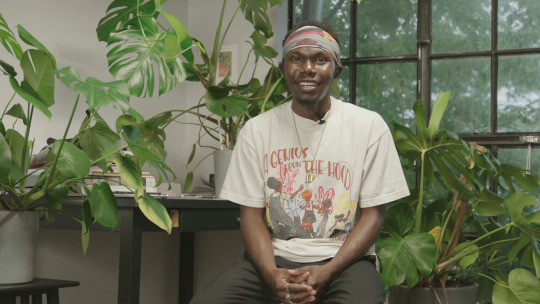
For my final blog post, I wanted to talk about an artist and visionary close to home; Brema Brema. He is known for founding the clothing and lifestyle brand “Unfinished Legacy”, which he started in good old Milwaukee, Wisconsin. Brema was born and raised in Sudan up until age five, where war-like conditions caused his family to flee to a Kenyan refugee camp. They later settled in Milwaukee in 2010. Growing up, Brema used skateboarding, street art and photography as his creative outlet and began interning at the Milwaukee Art Museum. One day, the staff were asked to describe themselves with one word, and one intern answered saying “unfinished”. This response resonated with Brema, it spoke to him about where he’s at now and the journey ahead of him. This epiphany influenced him to start his brand and its ethos. The concept behind an “unfinished legacy” makes you think about everything that has led you up to today and your potential of what still lies ahead. It kind of reminds me of when Kobe Bryant said “jobs not finished”, it has the same spirit. It encourages people to keep pushing forward, your legacy being “unfinished” to promote continued growth and being the best version of yourself.

I had first heard of Brema around 2018 when he came to my high school to give a presentation of his career. At this time he was a part of a creative media group called MKE Misfits, and was screen printing for Unfinished Legacy in his basement. The garments would consist of bright, vibrant colors with the brand logo, the iconic UL butterfly or “Milwaukee” printed on jeans, t-shirts and flannels. The butterfly ended up becoming a staple of the brand ethos and message. An interview with Vogue has Brema explain the importance of the butterfly, where he says “they represent migration, which fit my upbringing perfectly” and that “butterflies can’t see their wings or how truly beautiful they are, but everyone else can”. He followed by saying “I never realized my true potential and value in the world, It’s something I’ve struggled with as I continue to grow. Other people saw my talents and potential before I could.” These ideas align with Bremas story in a special way which he used to build the message behind the brand. The Vogue interview came about after Brema got some light shined on him for his “Black Lives Matter” tees, featuring the quote with butterflies around it, symbolizing hope. He would hand these tees out to protestors during the BLM movement in 2020 and sold some with proceeds going to a local youth organization True Skool.

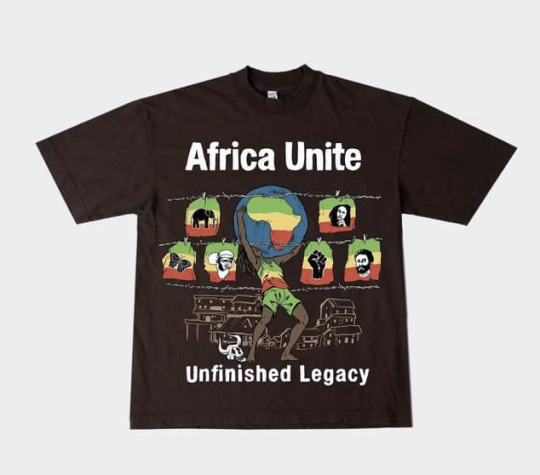
There is truly no one else in the city that has made moves and an influence like Brema has. I would even consider Unfinished Legacy to be the most successful streetwear and lifestyle brand that has come out of Milwaukee. Bremas’ art relates very closely to the Harlem Renaissance, a time where African Americans blossomed in Harlem through art mediums just like Brema demonstrates. Brema uses art, visual media, music and the community built behind the brand to tell his story and create an influence on the city and rest of the world. Besides the butterfly, Unfinished Legacy showcases the power of the black experience through positive messages and graphics, adding to the central theme of hope.

Some of these graphics include full print t-shirts of black icons; such as Bob Marley, Tupac Shakur, Basquiat, and Muhammad Ali, who’s stories relate to the brands message, and the“A Genius From The Hood'' graphic and Black History collection. To add to community influence, Brema would frequently hold pop ups at skate shops and streetwear stores in Milwaukee, New York and Los Angeles with his collection for sale and a screen print workshop where you can screenprint your own Unfinished Legacy tee. You can also find plenty of tutorials on his YouTube channel which guides you through everything you need to know to start your own clothing brand and production.
youtube
This year, after previously living in Los Angeles for a couple years, Brema moved back to Milwaukee and opened the flagship store for Unfinished Legacy where it all started. The store showcases everything the brand is about and also serves as a creative hub, where art exhibits and creative gatherings occur to foster a growing community in the city.
instagram

Just like the brand name says, Brema's work is unfinished. He is constantly learning and growing to reach his highest potential and influences a lifestyle for others to do so as well.
instagram
instagram
UL Instagram: https://www.instagram.com/unfinishedlegacy/
Brema Brema Instagram: https://www.instagram.com/brema__brema/
Vogue Article: https://www.vogue.com/slideshow/brema-unfinished-legacy
1 note
·
View note
Photo




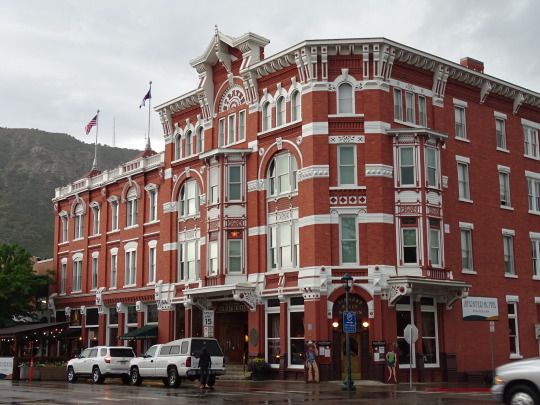

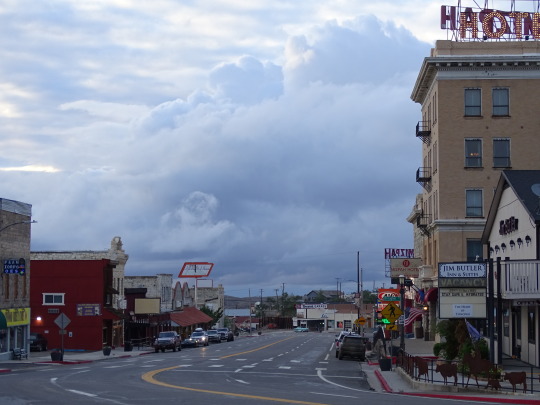

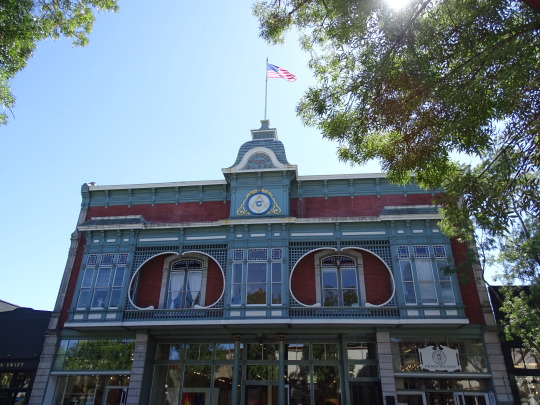

World Cities Day
World Cities Day is observed on October 31 every year. The aim of the day is to raise awareness about global urbanization and push for global cooperation in sustainable urban development. World Cities Day aligns with the U.N.’s Sustainable Development Goal 11, Sustainable Cities and Communities — which deals with urban development sustainably. World Cities Day was announced by the U.N. in 2013 and has been observed every year since. The day brings to light the inequalities within the biggest cities in the world and pushes for greater social inclusion, including equality and access to services and opportunities.
History of World Cities Day
The first-ever cities appeared in the fertile crescent between the Tigris and Euphrates rivers in a land known as Mesopotamia around 7500 B.C. These cities included Eridu, Ur, and Uruk. Soon, cities formed along the banks of the Nile River in Egypt, the Indus River in India, and the Huang He River in China. Cities grew in places with fertile soil, letting early humans abandon a more nomadic lifestyle. For the following millennia, cities continued to rise and fall across the world. Mesopotamia turned to rubble, the Indus Valley was deserted, and Rome rose and fell. But the institution of the city never went away.
Cities have been centers of trade, religion, culture, and education throughout history. However, the sheer scale of urban settlements today only became possible after the Industrial Revolution. The revolution drove people to cities in search of job opportunities in factories. Urban population growth has also been supported by technological advancements — these include the invention of steel, electricity conduction, elevators, etc. Over half the world’s population lives in cities now, and it’s more important than ever to make these people aware of how to sustainably co-exist within cities.
The U.N. has predicted that by 2030, there will be 41 megacities — cities with a population of over 10 million people. India, with its five megacities, is expected to house seven, other places that are bound to have megacities spring up include the likes of Kinshasa, the capital of the Democratic People’s Republic of Congo.
World Cities Day timeline
7500 B.C.Cities Spring Up
Cities begin springing up in Mesopotamia.
395 A.D.The Fall of Rome
The Western Roman Empire falls.
1760The Industrial Revolution
The Industrial Revolution begins.
2013World Cities Day
The U.N. announces the first World Cities Day.
World Cities Day FAQs
What was the theme of World Cities Day 2021?
The theme of World Cities Day was “Adapting Cities for Climate Resilience.”
What is a primate city?
A primate city is a city that is dominant among a country’s urban areas.
What are examples of primate cities?
Mexico City, Paris, Cairo, Jakarta, and Seoul have all been referred to as primate cities.
How to Observe World Cities Day
Learn about the history of cities
Learn about the issues in the modern city
Tell your friends and family
World Cities Day exists because cities do. Learn about the history of cities and find out things that may surprise you.
The institution of the city is fraught with problems, learn about them. See how communities as a whole can help solve some of them and make a difference in your city.
If you live in a city, help spread awareness by talking to your friends and family about what you learned. If nothing more, you can wow them with facts.
5 Interesting Facts About Cities Around The World
Moving Day
Museums
The Hollywood sign
Penguins in the city
Oldest European capital
Until the 1920s, everyone in New York only moved homes on May 1 — known as ‘Moving Day.’
Berlin has over 170 museums.
The iconic Hollywood sign in Los Angeles was initially spelled ‘Hollywoodland.’
Cape Town houses over 2,000 African penguins.
The oldest European capital is Athens, Greece.
Why World Cities Day is Important
It’s an excuse to learn about cities
It shines a light on an important issue
It’s a reminder to live more sustainably
Cities are a fascinating concept. We appreciate any opportunity to learn more about the ecosystem in which half the world lives.
Cities are indeed fraught with inequalities. World Cities Day brings to light the many problems plaguing cities around the world.
Sustainable development has been immensely imperative for decades now. World Cities Day is a reminder to be more mindful of that fact.
Source
#San Francisco#California#Denver#Colorado Springs#Old Colorado City#Alamosa#Durango#Las Vegas#Paradise#Colorado#Nevada#vacation#travel#summer 2022#Tonopah#Morro Bay#St. Helena#night shot#daylight#architecture#cityscape#small town#original photography#landmark#tourist attraction#World Cities Day#31 October#street scene
8 notes
·
View notes